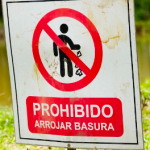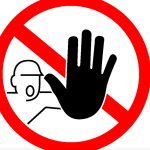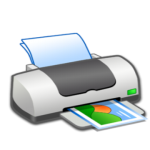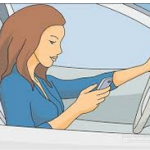11.4 Gramática: Los mandatos formales – Formal (usted / ustedes) Commands
11.4 Gramática: Los mandatos formales – Formal (usted / ustedes) Commands
As you learned in capítulo 10, commands are used to give orders or advice. The usted / ustedes commands (formal) are used when you want to give an order or advice to someone you usually address with usted.
A. Affirmative usted (Ud.) and ustedes (Uds.) commands (+)
| Las terminaciones regulares
Ud. Uds. -ar -e -en |
| Infinitive | Ud. Command | Uds. Command |
| hablar | hable | hablen |
| escribir | escriba | escriban |
| borrar | borre | borren |
| imprimir | imprima | impriman |
| Note: Commands are strong forms, even if they are formal. Use por favor whenever possible to soften your request. | ||
Hable más despacio. Borren sus correos.
Speak slowly. Erase your emails.
*Verbs with irregular YO form in the present tense usually maintain the same irregularity in the command form.
| Infinitive | YO present | Ud. command | Uds. command |
| conocer (to know) conducir (to drive) decir (to say) hacer (to do; to make) ofrecer (to offer) oír (to hear) poner (to put) salir (to leave) tener (to have) traducir (to translate) traer (to bring) venir (to come) ver (to see) |
conozco conduzco digo hago ofrezco oigo pongo salgo tengo traduzco traigo vengo veo |
conozca conduzca diga haga ofrezca oiga ponga salga tenga traduzca traiga venga vea |
conozcan conduzcan digan hagan ofrezcan oigan pongan salgan tengan traduzcan traigan vengan vean |
Ejemplos:
Oiga, venga para acá. Haga la tarea ahora mismo.
Listen, come over here. Do the homework right now.
Tenga cuidado, por favor. Ponga sus libros aquí.
Be careful, please. Put your books here.
* Verbs with vowel changes in the present tense, it usually maintain the same stem change in the command form.
| Infinitive | YO present | Ud. command | Uds. command |
| pensar (e:ie) (to think) perder (e:ie) (to lose) cerrar (e:ie) (to close) dormir (o:ue) (to sleep) volver (o:ue) (to return) servir (e:i) (to serve) repetir (e:i) (to repite) conseguir (e:i) (to get) |
pienso pierdo cierro duermo vuelvo sirvo repito consigo |
piense pierda cierre duerma vuelva sirva repita consiga |
piensen pierdan cierren duerman vuelvan sirvan repitan consigan |
Ejemplos:
Piense en su futuro. Cierren los libros.
Think about your future. Close the books.
* Verbs ending in –car, –gar, and –zar have spelling change in command forms.
Sacar (to take out) c → qu saque, saquen
Jugar (to play) g → gu juegue, jueguen
Almorzar (to have lunch) z → c almuerce, almuercen
* Irregular formal commands
| Infinitive | Ud. command | Uds. command |
| dar (to give) estar (to be) ir (to go) saber (to know) ser (to be) |
dé esté vaya sepa sea |
den estén vayan sepan sean |
B. Negative usted (Ud.) and ustedes (Uds.) commands. To make a formal command negative, place NO before the verb.
Ejemplos:
No vaya a la fiesta. No jueguen más videojuegos y estudien.
Don´t go to the party. Don´t play more video games and study.
C. Position of Pronouns with commands
* In affirmative commands, the pronouns (reflexive, indirect, and direct) are always attached to the end of the verb. (ONE WORD)
Ejemplos:
* Acuéstese ahora mismo. * Siéntense por favor.
Go to bed now. Sit down, please.
* Pídala. *Hágalo
Order it. Do it.
| Note: An accent is added when a pronoun is attached to an affirmative command with more than two or more syllables. |
*In negative commands, these pronouns always precede the verb. (THREE WORDS)
Ejemplos:
No se acueste ahora mismo. No se sienten por favor.
Don´t go to bed now. Don´t sit down, please.
No la pida. No lo haga.
Don´t order it. Don´t do it.
| Note: An accent is added when a pronoun is attached to an affirmative command with more than two or more syllables. |
 Actividad # 1
Actividad # 1
¡Los mandatos! Let’s build our knowledge. Convert the infinitive verbs to an affirmative and negative command. Follow the example.
Affirmative Negative
1. Traerlo (Ud.) Traígalo No lo traiga
2. Salir (Uds. ) ______________ ___ ___ _________
3. Levantarse (Ud.) ______________ ___ ___ __________
4. Imprimirlo (Ud.) ______________ ___ ___ __________
5. Publicar (Uds.) ______________ ___ ___ ___________
6. Apagarla (Ud.) ______________ ___ ___ __________
7. Hablar (Ud.) _______________ ___ ___ ___________
8. Ir (Uds.) _______________ ___ ___ ____________
9. Estar (Ud.) ________________ ___ ___ ___________
¡Inténtalo!
 Actividad # 2
Actividad # 2
Paso 1. Los mandatos en la clase de español. Imagine that you are the instructor for today. ¿What commands would you like to give your students?
Ejemplo: hablar español hablen español
usar el celular No usen el celular
- Traer los libros 5. Estudiar más 9. Hablar inglés
- Escribir la composición 6. Textear 10. Dormir en clase
- Trabajar con un compañero 7. Interrumpir la clase 11. Llegar tarde
- Hacer la tarea 8. Levantar la mano 12. Llegar temprano
Paso 2. Now, work with a compañero (a) and write three commands you would like to give your Spanish instructor or other professors.
1.________________ 2. _________________ 3. _________________
 Actividad # 3
Actividad # 3
¿Qué dicen? Look at the pictures and write a logical command (affirmative or negative) for each. Use the verbs given below.
| Banco de verbos: grabar apagar imprimir textear conducir descargar publicar llamar |
- ________________ 2. _________________ 3. __________________
4. ________________ 5. _________________ 6. __________________
 Actividad # 4
Actividad # 4
Solucionar. Work with a compañero (a). Take turns giving solutions to your classmate’s problems. Use formal commands.
Ejemplo: Estudiante A: Mi computadora no funciona muy bien
Estudiante B: Cómprese una nueva / Use las computadoras de la biblioteca.
Estudiante A
- Tengo muchos problemas con mi Android.
- Necesito escribir un ensayo (essay) para mi clase y no tengo impresora.
- El Internet no funciona en mi casa.
Estudiante B
- Me regalaron un iPhone, pero a mí no me gusta.
- Yo pago 200 dólares por mi contrato telefónico.
- Necesito descargar unos programas en mi computadora, pero no tiene mucho espacio.
 Actividad # 5
Actividad # 5
Las señales. In Spanish, the word prohibido + verb commonly expresses prohibited actions in a public space. Change the following signs to a formal Uds. command.
Ejemplo:

prohibido fumar ¡No fumen!



1. Prohibido tirar basura 2. Prohibido estacionar 3. Prohibido consumir alimentos
__________________ __________________ __________________



4. Prohibido usar el celular 5. Prohibido tomar fotos con flash 6. Prohibido tocar
__________________ __________________ __________________







